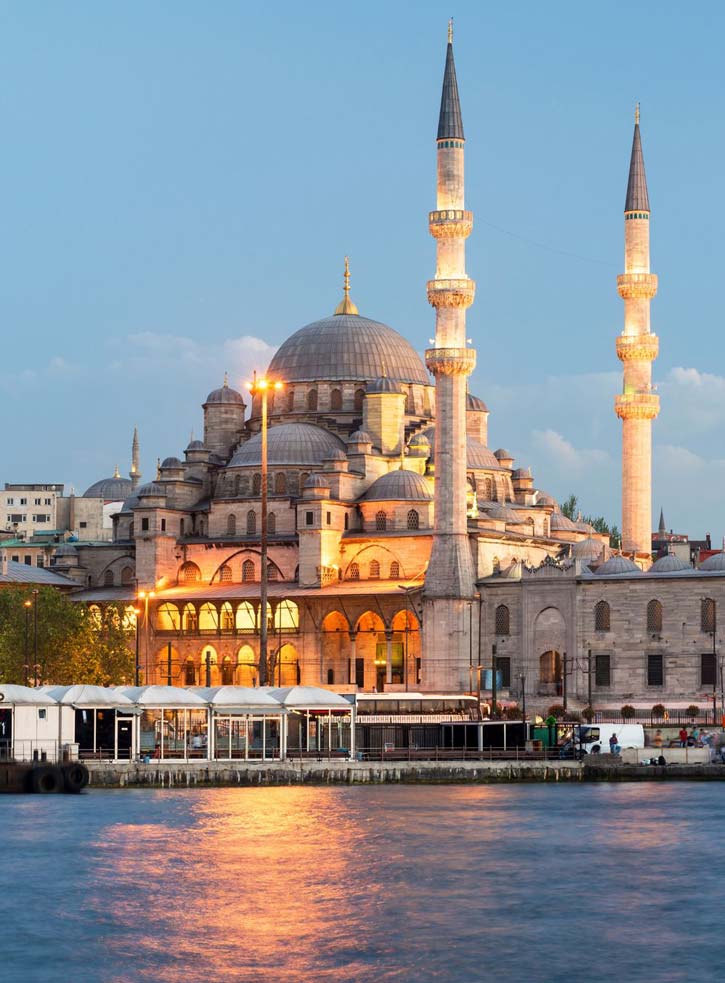
The Yeni Cami mosque near the Galata Bridge. Photo © Viacheslav Lopatin/123rf.
Across the Golden Horn in Beyoğlu, residents live a more contemporary European existence among the fancy bars of Taksim, art galleries of Tophane, and brand-name shops of Nişantaşı and Istiklal Street. Beyoğlu’s tree-lined boulevards are filled with posh eateries and fashionistas showing off their duds. Steps away, shoeshine boys and scarf-selling Anatolian women reside among the cacophony of street vendors, seagulls, and inescapable traffic.
The Bosphorus Strait and Marmara Sea are visible from almost any point in the greater city; the Black Sea to the north is within an hour’s travel. More than just a pretty landscape, the city’s geographic location and the abundance it brings have for millennia been Istanbul’s claim to fame. It is at once the world’s busiest maritime strait and home to nature’s richest underwater bounty. Come winter, fish large and small are caught along these precious waters. The waters’ edge also becomes a playground for well-to-do fun-seekers, who flock in droves to the many trendy hangouts.
As the only city in the world to spread over two continents, Istanbul also comprises a history-filled Anatolian (Asian) side just across the Bosphorus Strait. Its name was once Chalcedon, an Asian outpost that dates back to at least 3000 BC. The water-lapped quarter of Kuzguncuk near Üsküdar exemplifies this legacy with the centuries-old sanctuaries of three different religions dwelling uneventfully side-by-side. But if you expected sleepy villages, the diversity will surprise you. The district of Kadıköy boasts world class shopping and dining along the hectic thoroughfare of Bağdat Caddesi, whose highbrow destinations include Louis Vuitton and Burberry. With so much diversity, it’s no surprise that Istanbul was recently chosen as the European Capital of Culture by the European Union Council.
Excerpted from the Second Edition of Moon Istanbul & the Turkish Coast.